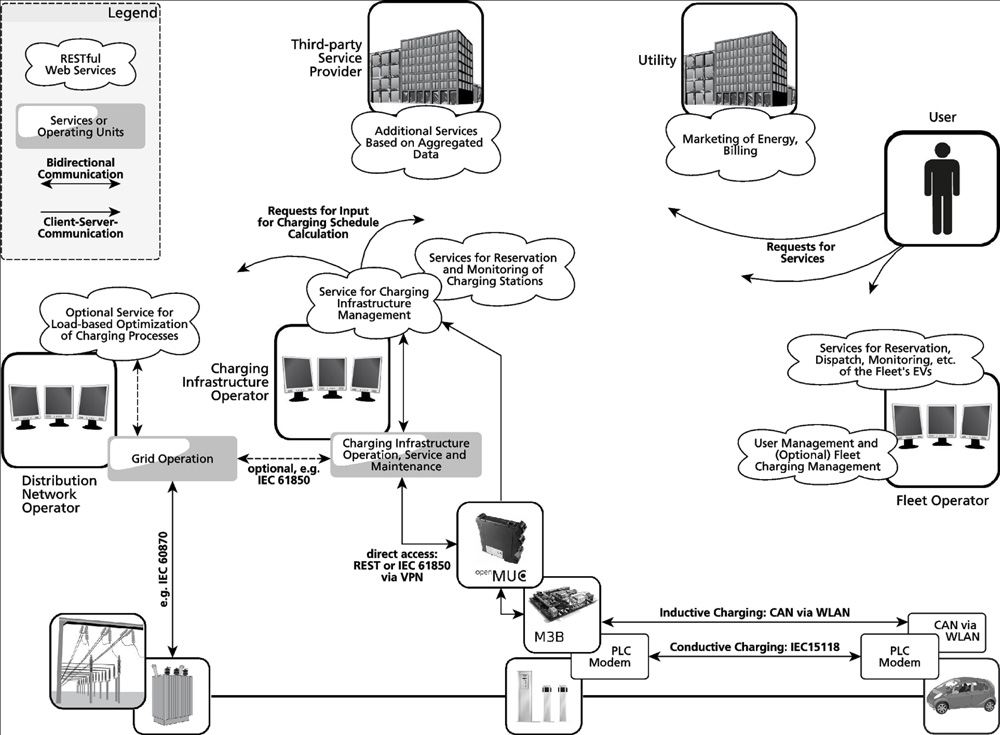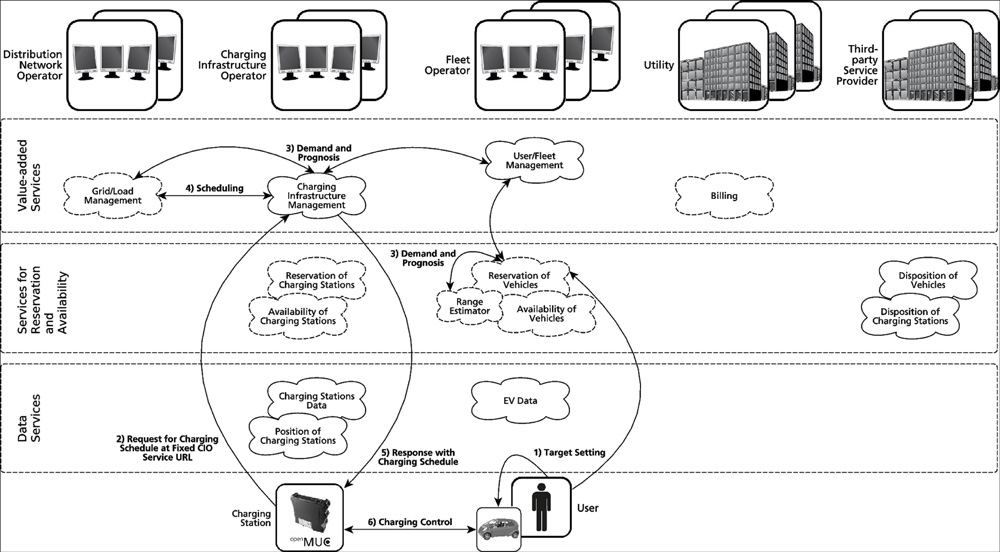Intelligent Integration of Shared-Use Electric Vehicles in Future Smart Grids and Smart Markets
Large fleets of future shared-use electric vehicles (EVs) will benefit from intelligent charging solutions. These solutions will provide maximum charging power without affecting grid stability and offer the opportunity to introduce new EV charging business models.
The main enabler for the future market of shared-use electric mobility is the data that is acquired, shared and processed via the various services of the mobility data cloud. The seamless integration of the charging infrastructure into this architecture is achieved by a system design that follows the design principles of the Representational State Transfer (REST) architectural style for distributed systems. These principles place the data resources necessary for an intelligent operation of the charging infrastructure in the center of the concept design.
This resource-oriented design approach introduces the charging infrastructure operator (CIO) as the central actor. He maintains direct access to the charging infrastructure via a secure virtual private network. This direct access allows for monitoring and service of the charging infrastructure as well as the flexible provision of an interface to grid operation. Integration of the charging infrastructure into emerging smart markets is done via open web-based interfaces. This flexible integration allows for the implementation and evolution of intelligent charging routines without affecting the configuration or implementation of the field devices.
The charging station’s firmware is based on the OpenMUC software framework of the Fraunhofer ISE, which comes with various built-in communication interfaces:
- REST- and IEC 61850 server as well as REST client to the higher-level cloud services
- DLMS/COSEM and M-Bus (wired) to energy meters
- USB to the M3B peripheral controller board
The data and status information of the local control routines can easily be acquired and modified by the charging infrastructure operator via the REST server of the OpenMUC framework. The M3B peripheral controller of the Fraunhofer ISE provides the CAN interface to the inductive charger and EV, GPIOs and an isolated switching output to control the charging contactor. Furthermore it handles conductive charging processes according to IEC 61851-3.
The management of the charging processes is implemented as a flexible interaction of cloud services, depending on which services are registered at the central charging infrastructure management. This approach allows stakeholders to participate in the emerging markets with various, evolving business cases. Charging process stages are defined and processed according to ISO 15118-1.
Target Setting (1)
Gathering of demand-related information of authenticated users via the EV’s user interface and direct EV to charge point communication or via cloud services such as EV reservation systems.
Demand and Prognosis (2-3)
Collection of information on electricity rates, grid state and EV availability during an interaction of the charging infrastructure operator’s web service with registered cloud services of other involved stakeholders.
Scheduling (4-5)
Compilation of the available information into a charging schedule either by the CIO’s web service or by a registered web service of another stakeholder. Communication of the schedule as a response to the charging station.
Charging Control (6)
Handled independently by the embedded system in the charging station.
 Fraunhofer-Gesellschaft | Shared use of electric mobility "GeMo"
Fraunhofer-Gesellschaft | Shared use of electric mobility "GeMo"
